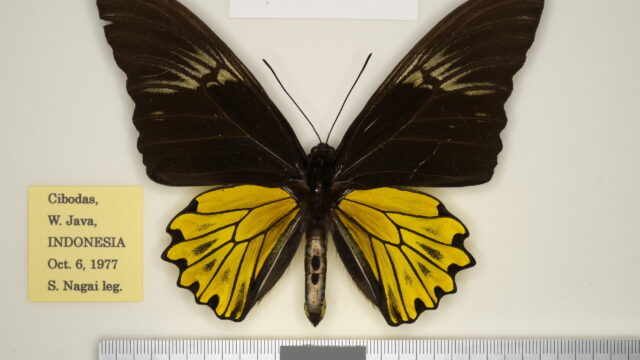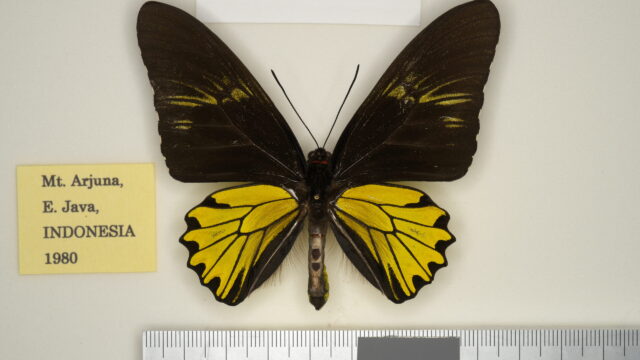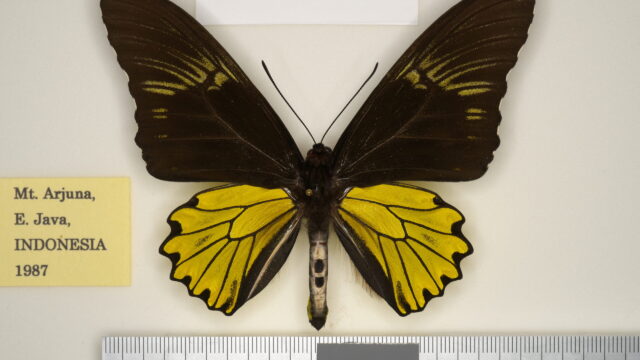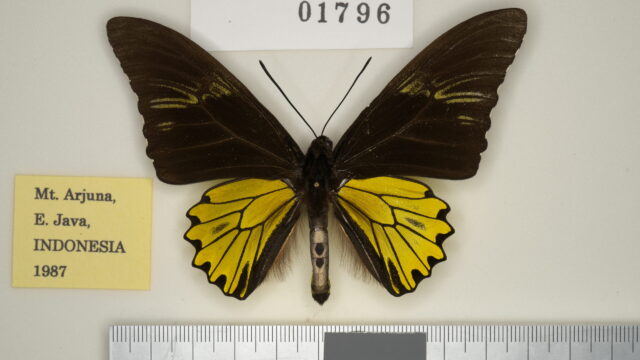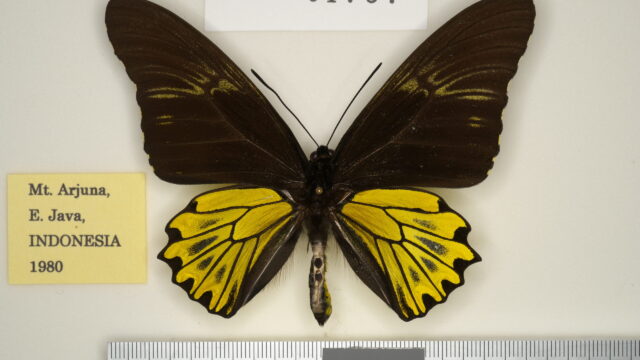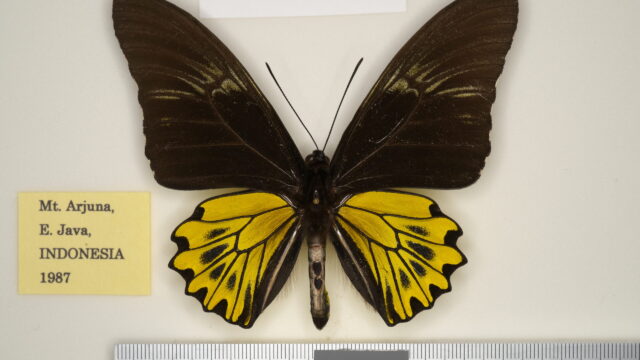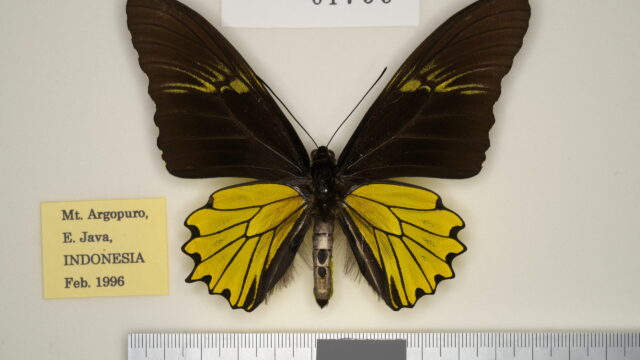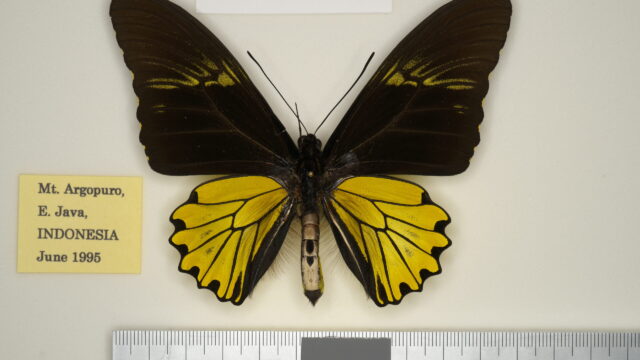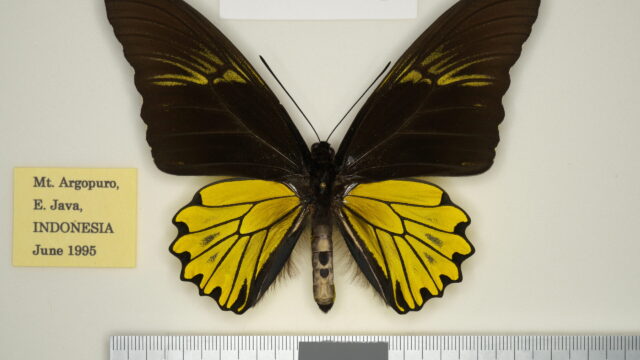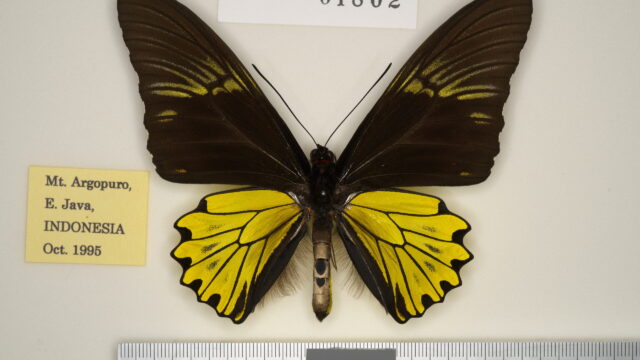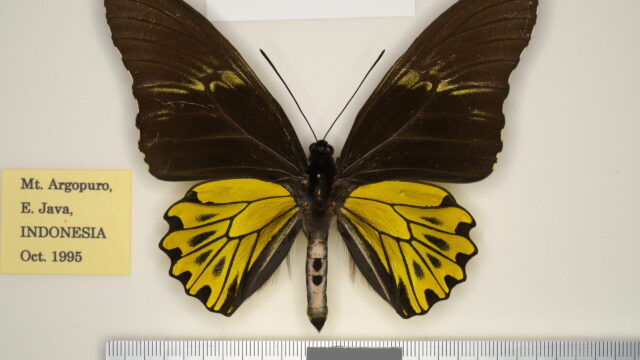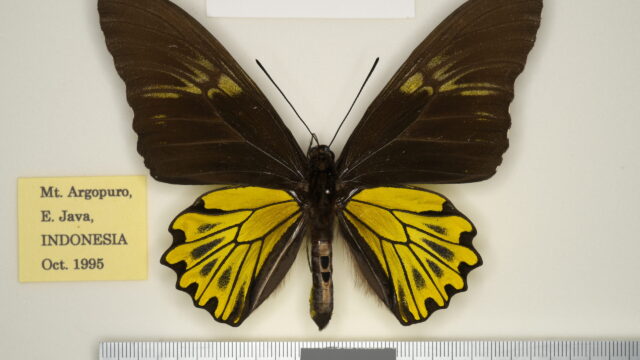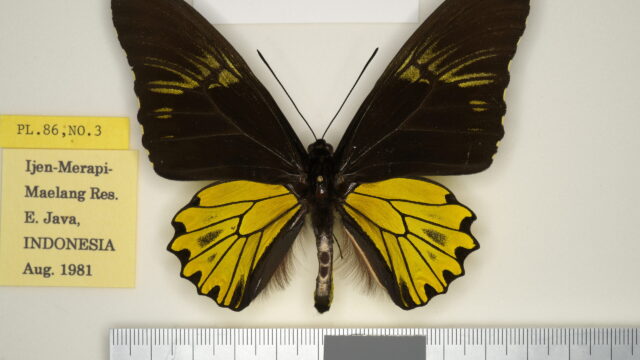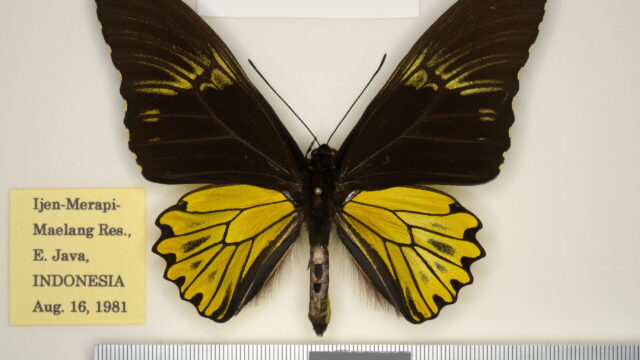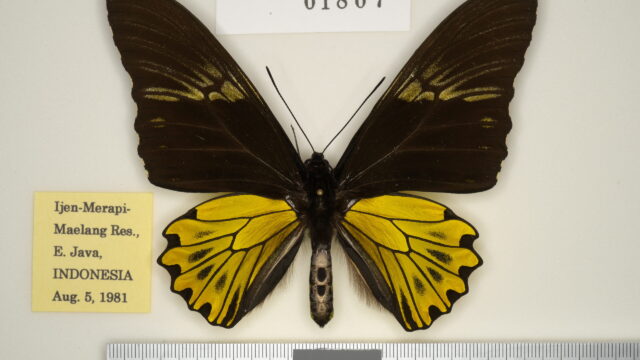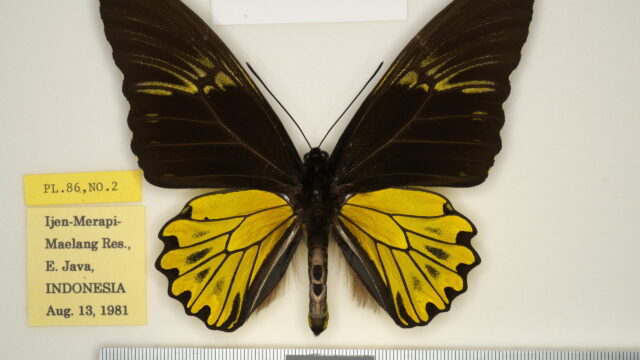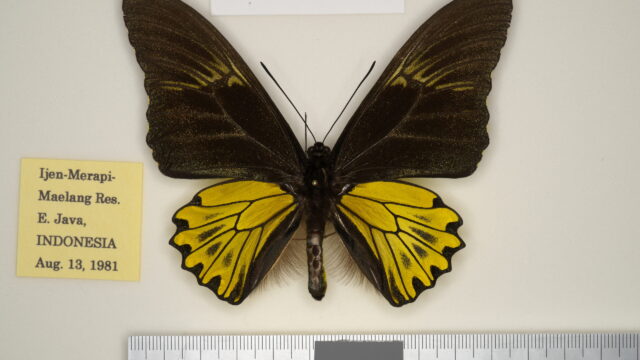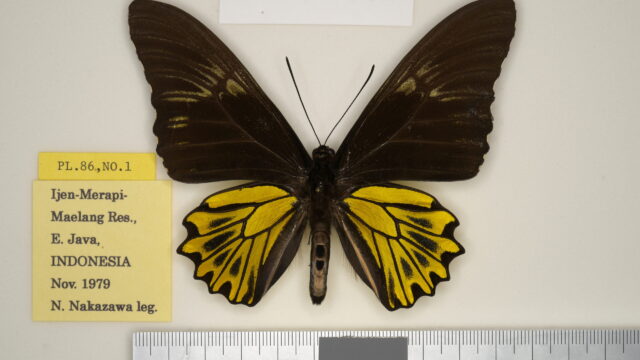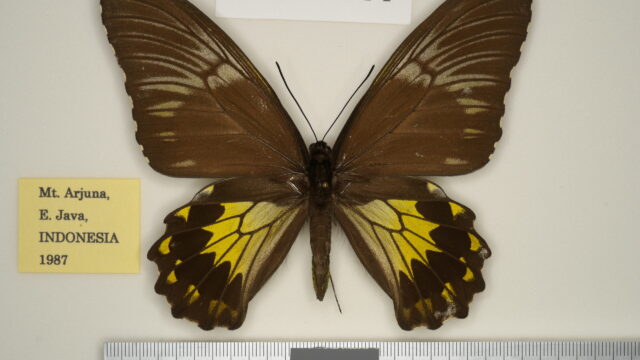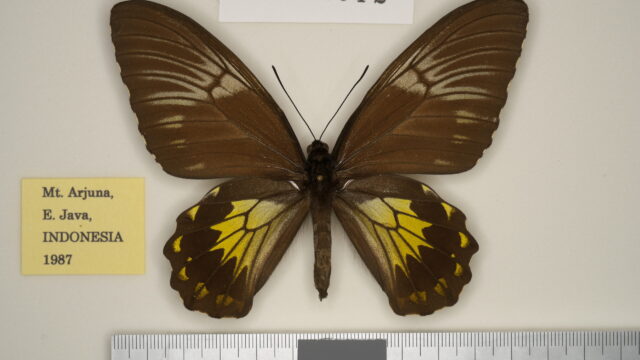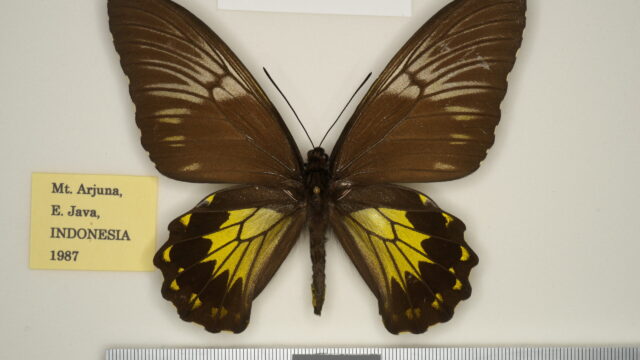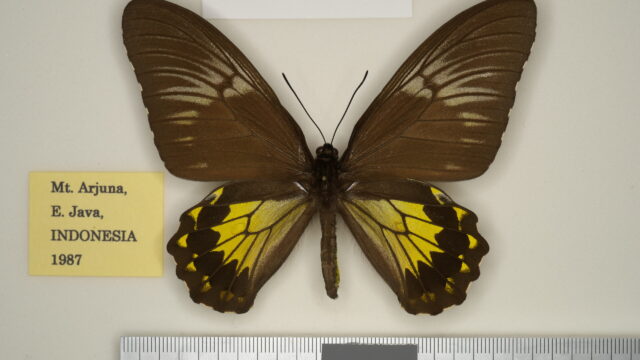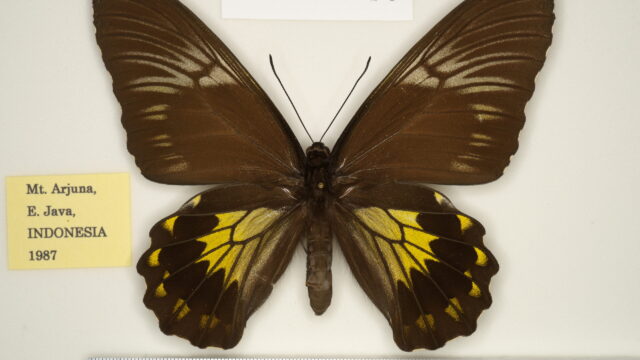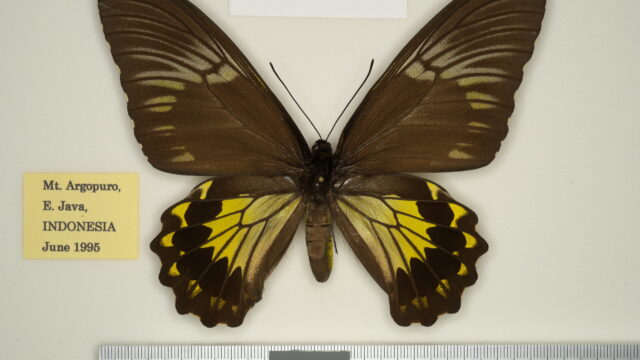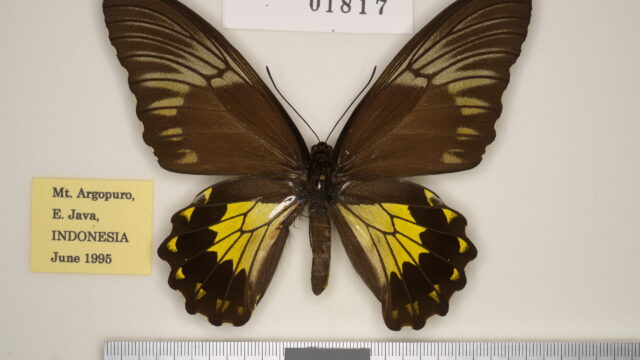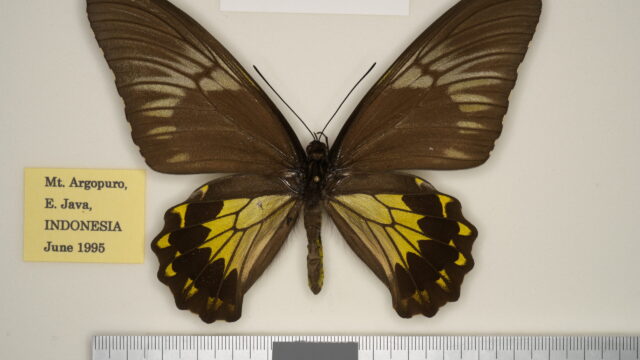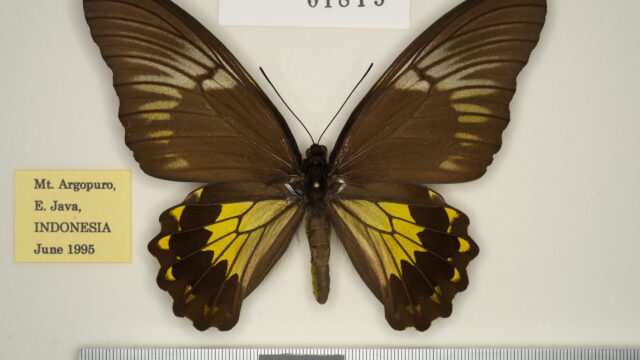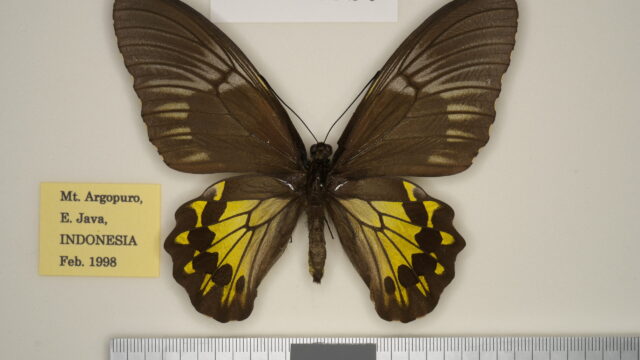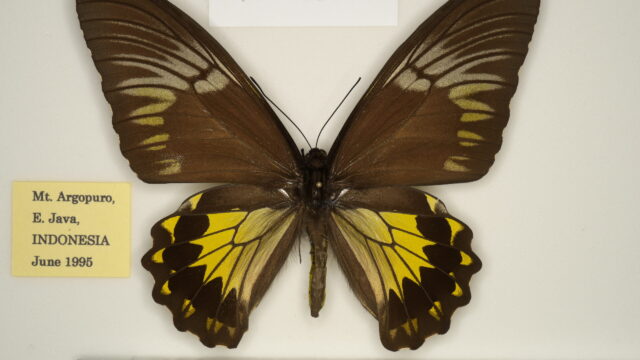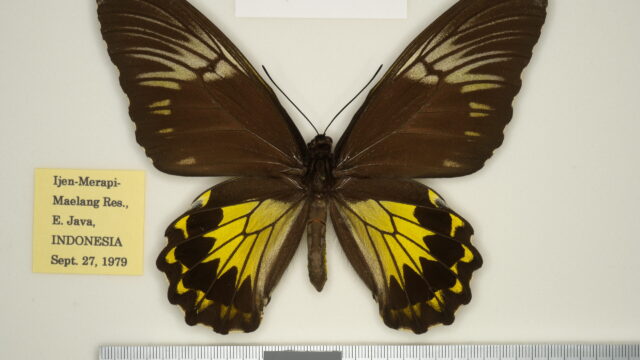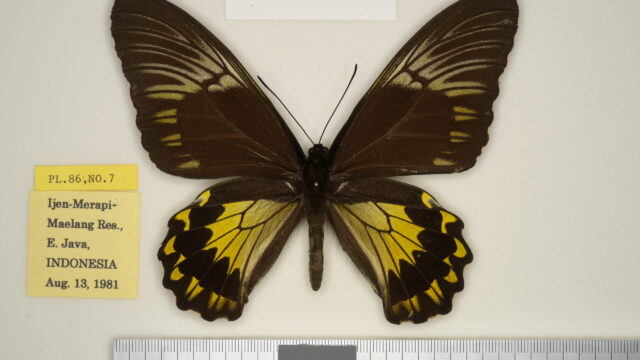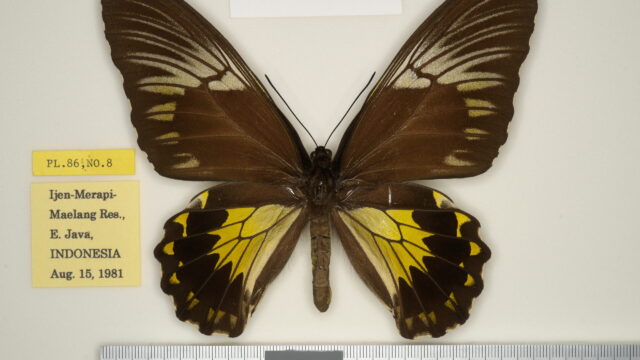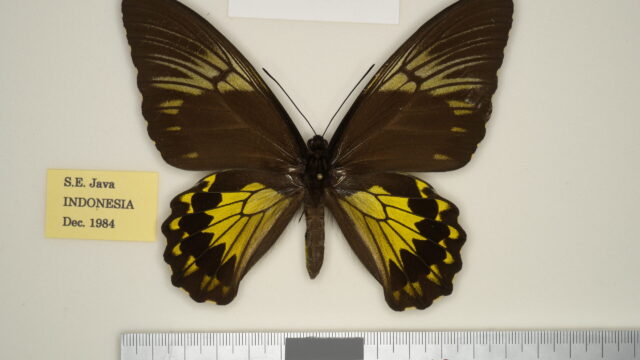- Ssp. cuneifera (Oberthür, 1879)6) [♂] [♀: ritsemae (Snellen, 1889)8)]
= ritsemae (Snellen, 1889)8) [♂, ♀] (Java (Preanger, Ardjoeno))
= (?) tantalus (Ehrmann, 1904)1) [♂] (Borneo)
(Distribution) [Map 90]
INDONESIA (Java) [E. Java] Mt. Salak, Cibodas, Mt. Gede-Pangrango Nat. Park (Mt. Gede, Mt. Pangrango), Sukabumi, Pengalengan, Mt. Malabar, Seda (near Mt. Cirema), [C. Java] Mt. Slamet, Dieng Plateau, [E. Java] Junggo, Mt. Arjuna, Lawang, Malang, Bromo-Tengger-Semeru Nat. Park (Mt. Bromo), Mt. Argopuro, Ijen-Merapi-Maelang Reserve.
(Episodes of discovery and original description)
It was first described by Oberthür (1879) as a variant (subspecies) of T. amphrysus based on a ♂ from Java. Unfortunately, the detailed collection locality and date of collection of the complete specimen are unknown. The first description of ♀ was probably given by Snellen (1889) as Pap. (Orn.) Ritsemae, together with ♂ from the highlands of Java (1600~1800 m). The species name cuneifera is a Latin word meaning “wedge-shaped”.
(Characteristics)
This subspecies is small-sized and has strong tendency to blacken.
(Spotted pattern)
♂: Vein-stripes on FW are the most distinct among subspecies. The black wedge-shaped (=cuneiform) spots on wing spaces of HW occur more frequently than in other subspecies and often larger and more distinct and black marginal projections are about the same size as ssp. sumatrana and larger than ssp. paeninsulae. Abdomen is also dark blackish brown, with two black oval spots on upper surface. No red hair tufts on lateral thorax.
♀: The FW vein-stripes are the most developed of the subspecies, grayish white with yellowish tinge towards the inner margin. The central area of the yellow pale band of HW is pale grayish-yellow and does not extend to the subcostal space, but a small spot rarely appears. The dark discal spots in wing spaces are large and fused together to form a band. No red hair tufts on lateral thorax.
(Variation)
♂-f. roepkei Haugum & Low, 19833): [Aberrant HW pattern] HW without black cuneiform spots in wing spaces, a characteristic of this subspecies.
